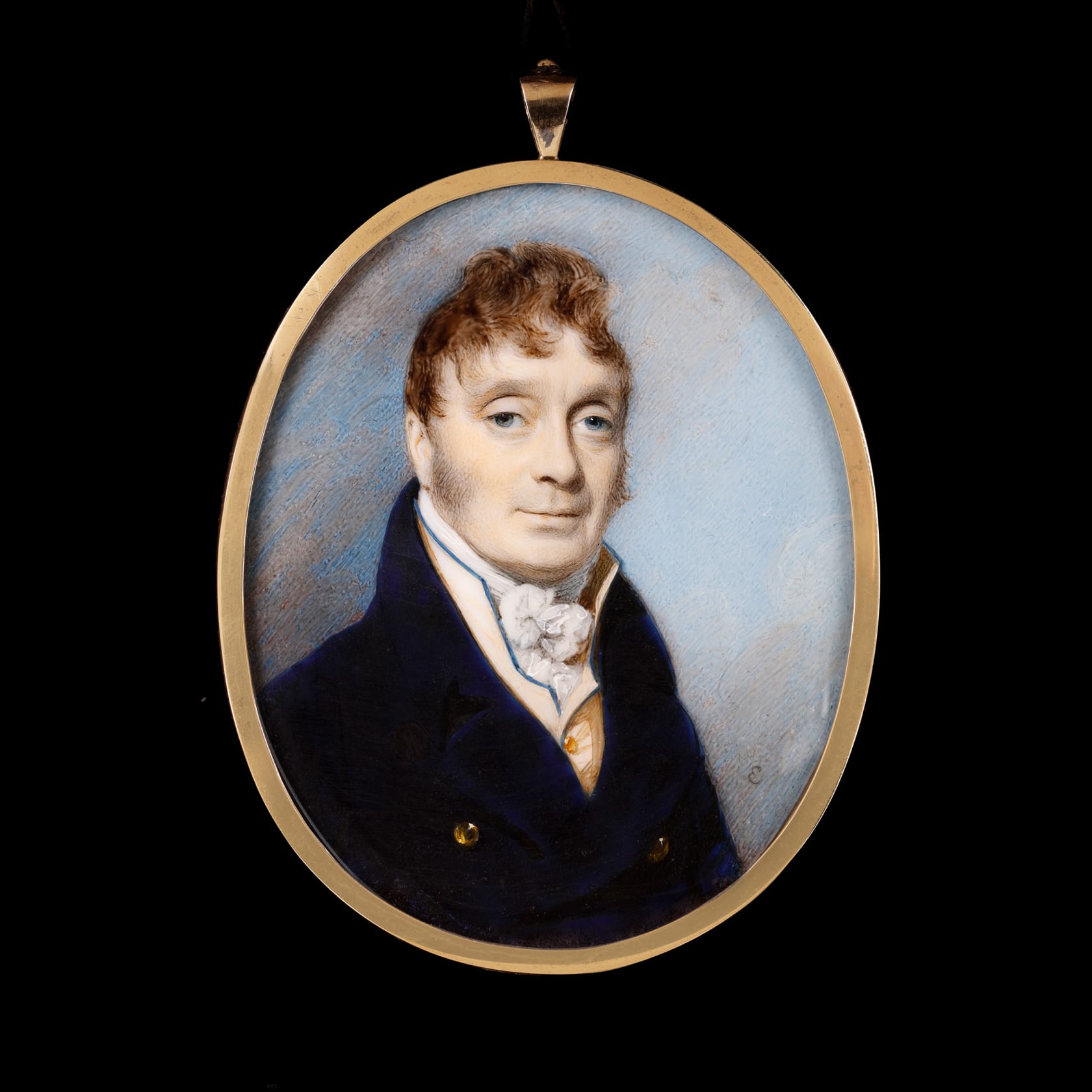George Engleheart began his own miniature painting practice in in about 1775 at the end of his apprenticeship with the landscape painter George Barret, R.A. and Sir Joshua Reynolds. He developed a rather decorative style, which flattered his sitters and as a result there was great demand for his work. His fee books, from 1775 to 1813, record that, over a period of nearly forty years, Engleheart painted no less than 4,853 miniatures (2,000 in the 1780’s alone). Sadly, with no clues to the sitter in the present miniature, it has not been possible to identify him from the book notes.
Despite this prodigious output, Engleheart maintained a consistently high standard. His style developed gradually over a long career that can be divided into three periods; the present work fitting into the final phase of his career. During his early phase of about five years his miniatures were small and in the ‘modest school’ style before he really...
George Engleheart began his own miniature painting practice in in about 1775 at the end of his apprenticeship with the landscape painter George Barret, R.A. and Sir Joshua Reynolds. He developed a rather decorative style, which flattered his sitters and as a result there was great demand for his work. His fee books, from 1775 to 1813, record that, over a period of nearly forty years, Engleheart painted no less than 4,853 miniatures (2,000 in the 1780’s alone). Sadly, with no clues to the sitter in the present miniature, it has not been possible to identify him from the book notes.
Despite this prodigious output, Engleheart maintained a consistently high standard. His style developed gradually over a long career that can be divided into three periods; the present work fitting into the final phase of his career. During his early phase of about five years his miniatures were small and in the ‘modest school’ style before he really developed his own technique. By the 1780’s, his middle phase, he had gained in confidence and his characteristic and highly accomplished style evolved. His sitters were painted with large deep eyes and a cool flesh tone. After about 1795, the period in which the present work was painted, Engleheart painted on larger ivories, and the familiar oval shape was frequently abandoned in favour of a rectangle. He often used a more sombre palette to model his sitters’ features and the portraits became more honest and less flamboyant. This portrait carefully records the distinctive hooded eyes of the sitter, his reddish hair brushed forward in a fashionable ‘Byronic’ style.




